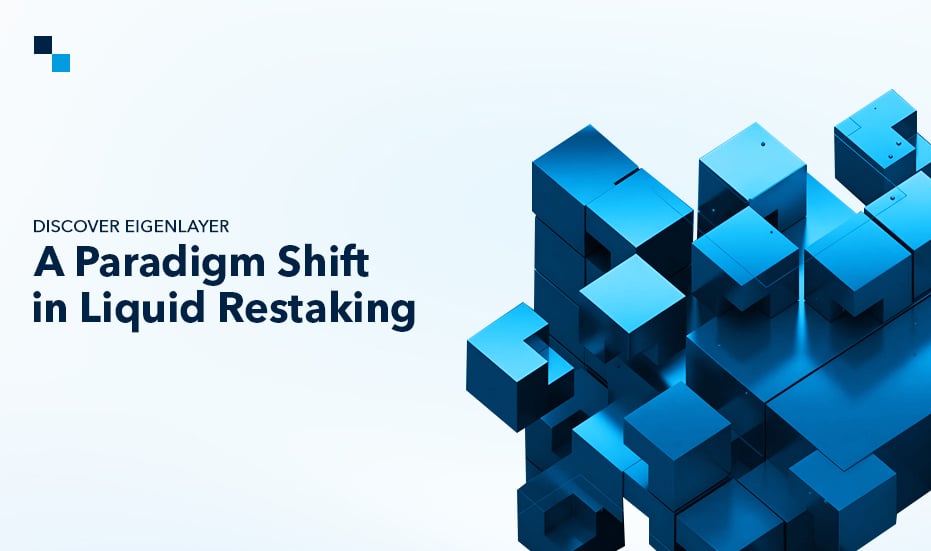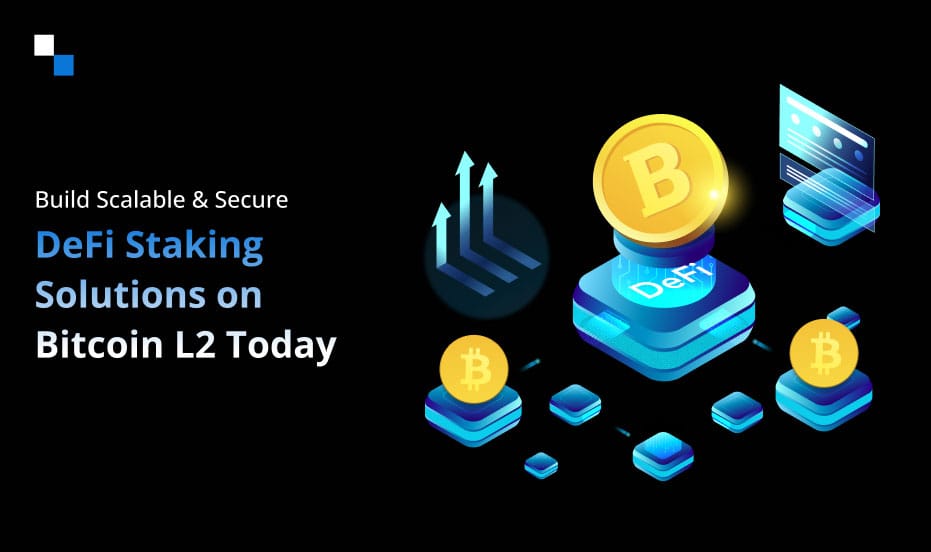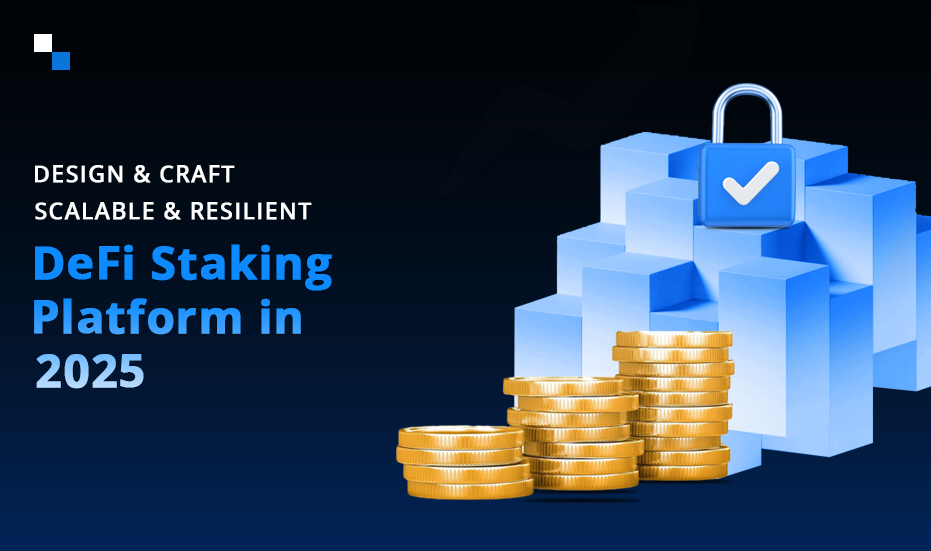
How to Launch Your White Label Crypto Bank with Seamless Virtual Card Integration
October 1, 2024
How Smart Contracts Solve KYC Challenges for FinTech & Banking Sectors?
October 3, 2024In the rapidly changing landscape of blockchain technology, the EigenLayer protocol emerges as a groundbreaking innovation within the Ethereum ecosystem. By rethinking how cryptoeconomic security is approached, EigenLayer introduces a paradigm shift that could redefine the interaction and functionality of decentralized services. The blog delves into the intricacies of EigenLayer, its architectural components, and the far-reaching implications it holds for the future of blockchain.
What is EigenLayer?
At its core, EigenLayer enables the re-staking of liquid staking tokens (LSTs), thereby creating a multiplicative effect on the security and utility of staked ETH. The innovation effectively decouples the economic security of the Ethereum network from the limitations posed by its native token supply. In traditional blockchain architectures, security is often directly correlated with the total value locked in a network’s native token; EigenLayer breaks this mold by introducing a multi-layered security model. This model can dynamically allocate resources based on market demands and risk profiles, offering greater flexibility and efficiency.
The Role of EigenLayer
In the rapidly changing landscape of blockchain technology, the EigenLayer protocol emerges as a groundbreaking innovation within the Ethereum ecosystem. By rethinking how cryptoeconomic security is approached, EigenLayer introduces a paradigm shift that could redefine the interaction and functionality of decentralized services. The blog delves into the intricacies of EigenLayer, its architectural components, and the far-reaching implications it holds for the future of blockchain.
What is EigenLayer Restaking?
In the rapidly changing landscape of blockchain technology, the EigenLayer Restaking protocol emerges as a groundbreaking innovation within the Ethereum ecosystem. By rethinking how cryptoeconomic security is approached, EigenLayer introduces a paradigm shift that could redefine the interaction and functionality of decentralized services. The blog delves into the intricacies of EigenLayer, its architectural components, and the far-reaching implications it holds for the future of blockchain.
The Role of Liquid Restaking
DeFi Liquid restaking has gained traction in the Ethereum ecosystem as it allows users to stake their ETH while still maintaining liquidity. By using liquid staking tokens, participants can engage in various DeFi activities, such as trading or lending, without sacrificing their staked assets. EigenLayer builds upon this concept, enabling users to re-stake their liquid tokens across multiple layers, amplifying security without compromising access to their assets.
EigenLayer and Liquid ReStaking: A Synergistic Partnership

EigenLayer and liquid restaking are two innovative concepts in the Ethereum ecosystem that work together to enhance the utility and efficiency of staked Ethereum.
Liquid Staking
Definition: Liquid restaking allows users to stake their Ethereum without locking it up for an extended period. In exchange, they receive liquid staking tokens (LSTs) that can be traded or used in other DeFi applications.
Benefits:
- Liquidity: Provides flexibility for users to access their staked funds.
- Yield: Offers additional rewards beyond the base staking rewards.
EigenLayer
Definition: EigenLayer is a protocol that introduces the concept of “restaking.” It allows Ethereum validators to commit their staked ETH to secure other protocols or services, earning additional rewards.
Benefits:
- Increased utility: Enables staked ETH to be used for multiple purposes.
- Enhanced security: Provides additional security to other protocols.
- Diversified yield: Offers new opportunities for earning rewards.

Interlinkage between EigenLayer and Liquid Restaking
EigenLayer provides a mechanism for liquid staking tokens to be restaked, further enhancing their utility and earning potential. This is achieved through the following steps:
- Deposit LSTs: Users deposit their LSTs (e.g., stETH, rETH) into EigenLayer.
- Restate: EigenLayer restakes the underlying staked ETH to secure other protocols.
- Earn rewards: Users receive additional rewards from both the original staking pool and the restaked protocols.
Key advantages of this interlinkage:
- Enhanced yield: Users can earn higher returns by participating in multiple protocols.
- Increased liquidity: Liquid staking tokens remain liquid, allowing users to trade or use them in other applications.
- Improved security: The restaked ETH helps secure other protocols, contributing to the overall security of the Ethereum ecosystem.
Actively Validated Services (AVS)
One of EigenLayer’s most significant contributions is the introduction of Actively Validated Services (AVS). This framework allows developers to create highly specialized and efficient decentralized services that leverage Ethereum’s robust security model without being confined by its execution environment.
Potential Applications of AVS
The possibilities for AVS are extensive. From complex cryptographic protocols to oracle networks, the AVS framework can cater to a wide range of applications, including:
- Cross-Chain Communication Systems: Facilitating seamless interactions between different blockchains, enhancing interoperability.
- Advanced Privacy-Preserving Computations: Enabling secure, private transactions and computations that protect user data.
- Decentralized Identity Solutions: Allowing individuals to manage their identities securely across various platforms.
These diverse applications showcase EigenLayer’s potential to push the boundaries of decentralized technology, making it a versatile tool for developers.
Architectural Components
EigenLayer comprises a sophisticated system of smart contracts, each playing a crucial role in maintaining the integrity and functionality of the protocol:
- TokenManager: The essential component facilitates staking and withdrawal operations, ensuring liquidity and seamless asset flow between Ethereum and the EigenLayer ecosystem. It helps maintain a stable connection between the two layers, allowing for efficient security resource allocation.
- DelegationManager: The manager oversees the registration of operators and tracks their respective stakes. By enabling the creation of complex staking derivatives and secondary markets for security provision, it introduces a layer of abstraction that enhances the overall flexibility of the staking model.
- SlasherManager: This innovative manager allows AVS developers to implement customized slashing logic, granting fine-grained control over the risk-reward profiles of their services. Developers can tailor incentive structures to align closely with the specific needs of each application, leading to stronger, more resilient protocols.
Economic Dynamics and Incentive Structures
EigenLayer’s economic model introduces novel dynamics within the staking ecosystem, reshaping the incentive structures that govern network participation. Participants can earn compounded yields through re-staking across multiple AVS layers, which may lead to more efficient capital allocation within the Ethereum ecosystem. This interconnected approach fosters a dynamic environment where assets flow toward the most productive services, optimizing resource utilization.
Security Composability

A key concept in EigenLayer is “security composability,” which emphasizes that the overall security of the network is not solely dependent on the amount staked. Instead, it relies on how stakes are distributed across various services and protocols. This interconnectedness allows for a more resilient blockchain ecosystem, where the security of one service can enhance the overall robustness of the network.
Advancements in Governance and Protocol Upgradability
The architecture of EigenLayer prompts a re-evaluation of blockchain governance and protocol upgradability. The ability to dynamically allocate security resources creates a more fluid governance model, enabling quick adaptations to market demands and technological advancements.
The Challenge of Stability
While this flexibility can lead to more efficient protocol evolution, it introduces challenges in maintaining long-term stability and predictability. Ensuring that governance structures can adapt without compromising the security and integrity of the network is crucial for the sustainable growth of decentralized ecosystems.
Enhancing Layer 2 Solutions
EigenLayer’s potential impact on Layer 2 scaling solutions is significant. By allowing rollup operators to leverage the security of restaked ETH, EigenLayer reduces the barriers to entry for new rollup implementations. This enhancement could accelerate the development of efficient and specialized rollup designs, contributing to a more robust and diverse scaling ecosystem for Ethereum.
A Future of Scalable Solutions
As Ethereum continues to evolve, Layer 2 solutions will play an increasingly critical role in addressing scalability challenges. EigenLayer positions itself as a pivotal player in this space, enabling developers to create innovative solutions that maximize security while ensuring seamless user experiences.
Explore Restaking Solutions Today!
[widget id=”custom_html-3″]
The Future of Privacy and Cryptography
The integration of advanced cryptographic techniques, such as zero-knowledge proofs, fully homomorphic encryption, and secure multi-party computation, positions EigenLayer as a catalyst for the next generation of privacy-preserving decentralized applications.
Lowering Technical Barriers
By providing a standardized interface for implementing these complex protocols, EigenLayer significantly reduces the technical barriers that developers face. This opens the door to a new wave of innovation, where privacy-enhancing technologies can flourish on the blockchain.
Conclusion
EigenLayer represents a revolutionary step in blockchain technology, introducing a modular approach to security that could redefine the landscape of decentralized services. By creating a marketplace for security as a service, EigenLayer not only enhances the efficiency and security of the Ethereum ecosystem but also accelerates the development of innovative blockchain infrastructures optimized for specific use cases.
As we continue to explore the implications of this protocol, it’s clear that EigenLayer is not just a technical advancement—it’s a transformative force that has the potential to reshape the future of blockchain. The interconnectedness, efficiency, and enhanced security it offers signal a promising era for decentralized applications. As the blockchain community embraces these innovations, the journey is just beginning, and the possibilities are limitless. The future is bright for EigenLayer and the decentralized world it seeks to empower. Want to know more? Get in touch with Antier today!




